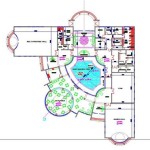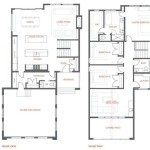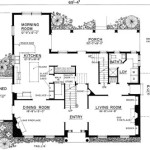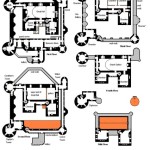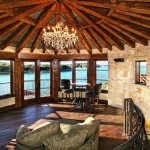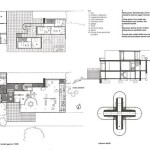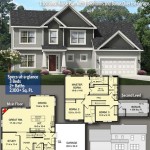House Plans with Pools and Outdoor Kitchens
Integrating a pool and outdoor kitchen into a home's design significantly enhances its appeal and functionality. These features create an ideal environment for relaxation, entertainment, and outdoor living. Careful planning and consideration are crucial to ensure seamless integration with the overall house design and maximization of the available space.
When selecting a house plan with a pool and outdoor kitchen, several key factors should be considered. The size and shape of the lot play a pivotal role in determining the feasible dimensions and placement of these features. A thorough site analysis helps identify potential challenges, such as sloping terrain or restricted access, which may influence design choices.
Climate also significantly impacts the utility and enjoyment of these outdoor amenities. In regions with extended warm seasons, the pool and outdoor kitchen become central to the lifestyle, warranting larger spaces and more elaborate designs. Conversely, in areas with shorter warm seasons, more compact and adaptable designs may be more practical. Features like pool heaters and covered outdoor kitchen areas can extend the usability of these spaces in cooler climates.
The architectural style of the house should harmonize with the design of the pool and outdoor kitchen. A contemporary home might benefit from a sleek, geometric pool and a minimalist outdoor kitchen featuring stainless steel appliances. A traditional home, on the other hand, might be complemented by a more classic pool shape and an outdoor kitchen with natural stone finishes.
Budgetary considerations are paramount in any home building project. Pools and outdoor kitchens can represent a significant investment, and accurate cost estimations are essential. Factors influencing cost include the size and materials used for the pool, the complexity of the outdoor kitchen design, and the chosen appliances and finishes.
The pool's design requires careful attention to factors beyond size and shape. Considerations include the type of pool (in-ground, above-ground, or semi-in-ground), the filtration system, and safety features such as fencing and alarms. Integrating the pool seamlessly into the landscape design through the strategic use of landscaping, decking, and lighting enhances the overall aesthetic appeal.
Outdoor kitchens can range from simple grilling stations to elaborate culinary spaces equipped with refrigerators, sinks, ovens, and specialized cooking equipment. The design should consider the intended usage, the number of people it needs to accommodate, and the desired level of functionality. Practical elements like ample counter space, storage solutions, and weather-resistant materials are crucial for creating a user-friendly and durable outdoor kitchen.
Placement of the pool and outdoor kitchen relative to the house and each other is a critical design element. Ideally, these spaces should be easily accessible from the main living areas of the house, facilitating convenient transitions between indoor and outdoor spaces. Proximity to utility connections, such as water, gas, and electricity, simplifies installation and reduces costs.
Privacy is another important consideration, especially in densely populated areas. Strategically placed landscaping, fencing, or screens can create a sense of seclusion and enhance the enjoyment of the outdoor spaces. The orientation of the pool and outdoor kitchen should also take into account the prevailing winds and sun exposure to optimize comfort and minimize undesirable elements like excessive shade or wind.
Building codes and regulations vary by location and must be adhered to throughout the design and construction process. Obtaining the necessary permits and approvals ensures compliance and avoids potential delays or complications. Consulting with experienced professionals, such as architects, landscape designers, and pool contractors, is highly recommended to ensure a successful and compliant project.
Maintenance requirements for both the pool and outdoor kitchen should be considered. Pools require regular cleaning, chemical balancing, and equipment maintenance. Outdoor kitchens require cleaning, protection from the elements, and periodic maintenance of appliances. Choosing durable and easy-to-maintain materials can minimize the time and effort required for upkeep.
Accessibility and safety are paramount, particularly for families with children or individuals with mobility limitations. Features like shallow pool entries, non-slip surfaces, and adequate lighting contribute to a safe and accessible environment. Incorporating universal design principles ensures that the spaces can be enjoyed by individuals of all abilities.
Sustainability can be integrated into the design through various strategies. Using energy-efficient pool pumps and heaters, selecting sustainable building materials, and incorporating water-saving landscaping practices can reduce the environmental impact of these features. Rainwater harvesting systems can be implemented to irrigate the landscape, further conserving water resources.
Finally, incorporating smart home technology allows for enhanced control and automation of features like pool heating, lighting, and security systems. This integration can improve energy efficiency, enhance convenience, and provide greater peace of mind.

Pool House With Indoor And Outdoor Kitchens 360109dk Architectural Designs Plans

Stunning 3 Bed Contemporary One Story House Plan With Outdoor Kitchen 86075bw Floor Ma Mediterranean Style Plans Homes

Pool House Plans Plan With Outdoor Kitchen 006p 0025 At Www Theprojectplan Com Designs

Pool House Plans Plan With Outdoor Kitchen 050p 0001 At Www Theprojectplan Com

Pool House With Outdoor Kitchen Design Luxury Decor

4 Bedroom Ranch Style House Plan With Outdoor Kitchen

Plan 56477sm 4 Bed French Country House With Outdoor Kitchen Plans Farmhouse Ranch

6 Outdoor Kitchens With Built In Barbeques

Pool House Plans Cabana With Outdoor Kitchen 035p 0001 At Www Theprojectplan Com

Pool House Plans Designs Cabana

